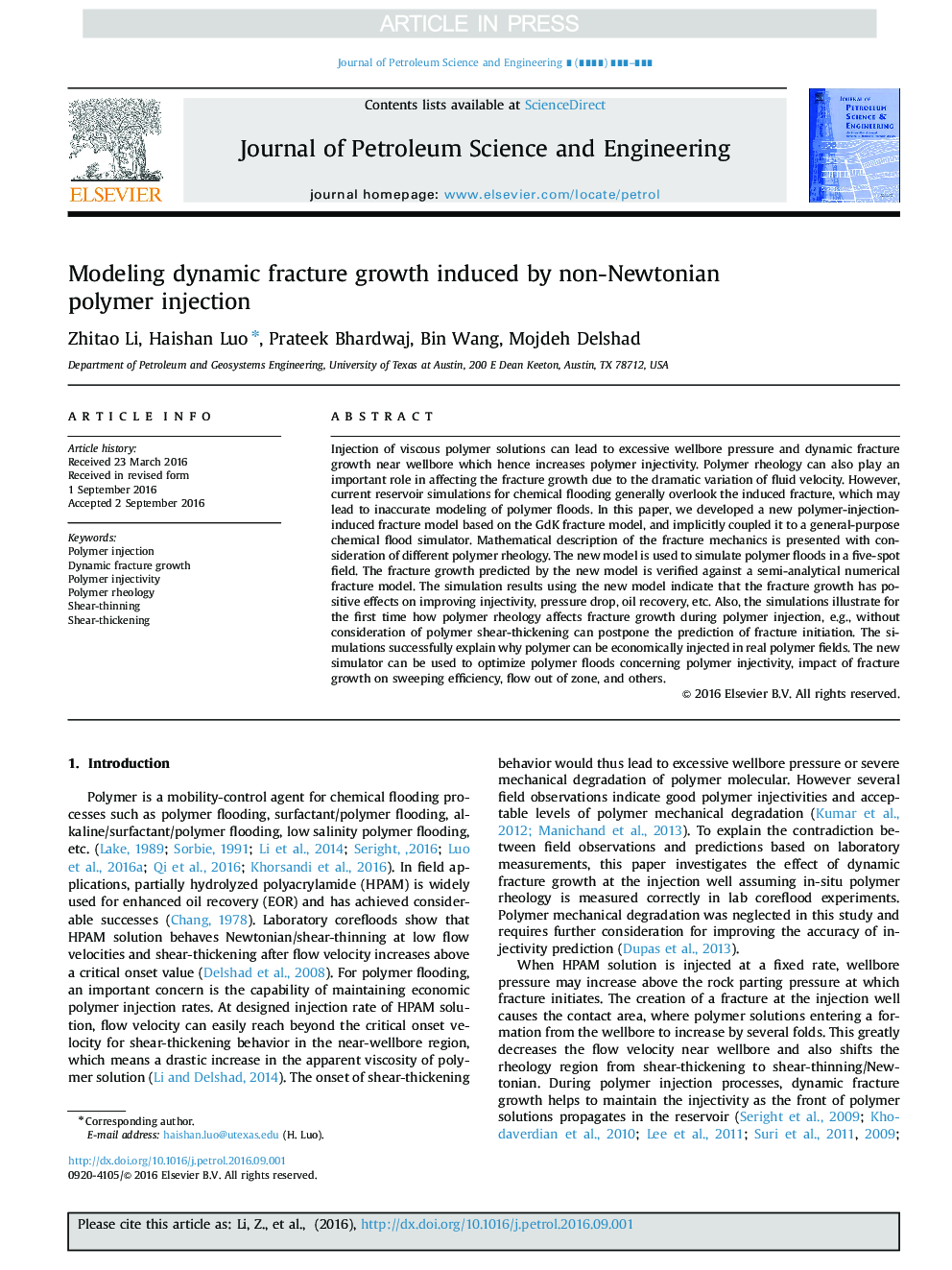| Article ID | Journal | Published Year | Pages | File Type |
|---|---|---|---|---|
| 8125715 | Journal of Petroleum Science and Engineering | 2016 | 13 Pages |
Abstract
Injection of viscous polymer solutions can lead to excessive wellbore pressure and dynamic fracture growth near wellbore which hence increases polymer injectivity. Polymer rheology can also play an important role in affecting the fracture growth due to the dramatic variation of fluid velocity. However, current reservoir simulations for chemical flooding generally overlook the induced fracture, which may lead to inaccurate modeling of polymer floods. In this paper, we developed a new polymer-injection-induced fracture model based on the GdK fracture model, and implicitly coupled it to a general-purpose chemical flood simulator. Mathematical description of the fracture mechanics is presented with consideration of different polymer rheology. The new model is used to simulate polymer floods in a five-spot field. The fracture growth predicted by the new model is verified against a semi-analytical numerical fracture model. The simulation results using the new model indicate that the fracture growth has positive effects on improving injectivity, pressure drop, oil recovery, etc. Also, the simulations illustrate for the first time how polymer rheology affects fracture growth during polymer injection, e.g., without consideration of polymer shear-thickening can postpone the prediction of fracture initiation. The simulations successfully explain why polymer can be economically injected in real polymer fields. The new simulator can be used to optimize polymer floods concerning polymer injectivity, impact of fracture growth on sweeping efficiency, flow out of zone, and others.
Related Topics
Physical Sciences and Engineering
Earth and Planetary Sciences
Economic Geology
Authors
Zhitao Li, Haishan Luo, Prateek Bhardwaj, Bin Wang, Mojdeh Delshad,
